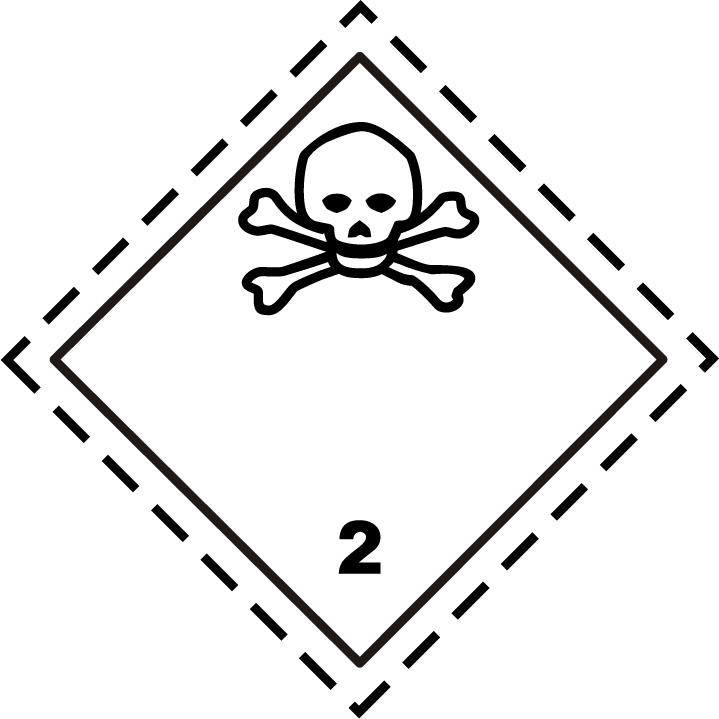
Labels are a requirement in many jurisdictions for the transport of dangerous goods. These labels are different to those used for GHS-compliant storage, with the addition of the non-GHS labels for the transport of radioactive items, infectious substances, and miscellaneous dangerous goods. The UN system aims to ensure internationally consistent labelling, communication, and classification conventions, making trade and movement of chemicals an easier, safer task.
These labels are not technically part of the GHS, rather they are from the United Nations Model Regulations on the Transport of Dangerous Goods. However, they are almost always ratified in jurisdictions which have also adopted the GHS as their regulatory model for the safe handling of chemical substances.
Depending on the jurisdiction, a dangerous goods label will be one part of a complete placard. Additional information on a placarded load may include the UN number of the substance, chemical name, HAZCHEM code, and emergency contact details. Read on to understand the meaning of these labels for different classes of dangerous goods.


This class covers all explosive substances, except that which is too hazardous to transport, and is visualised by an exploding circle. This class may include substances and articles which have a mass explosion hazard, projection hazard, fire and minor blast hazard, pyrotechnic substances, and substances which may be explosive but are very insensitive.
Explosive substances and articles can be classified to one of six divisions, from 1.1 most hazardous to 1.6 least hazardous.

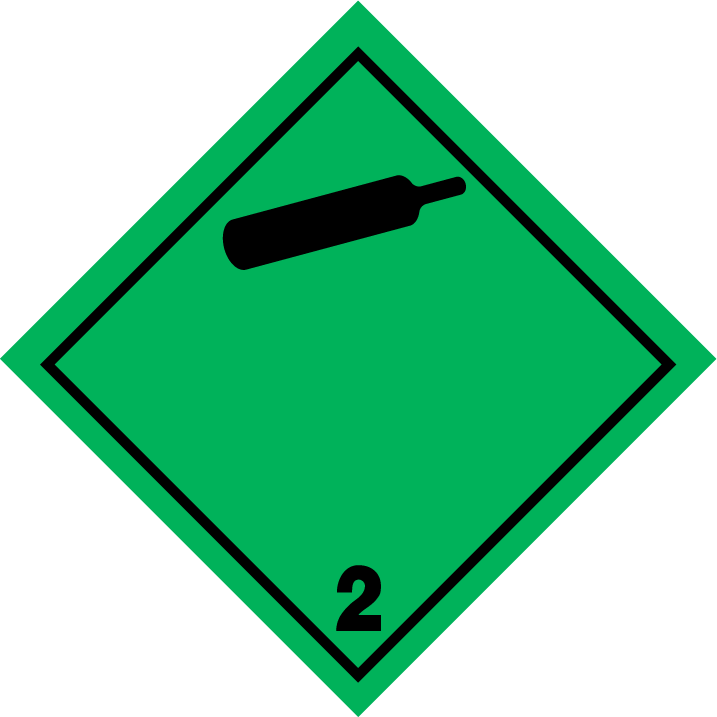
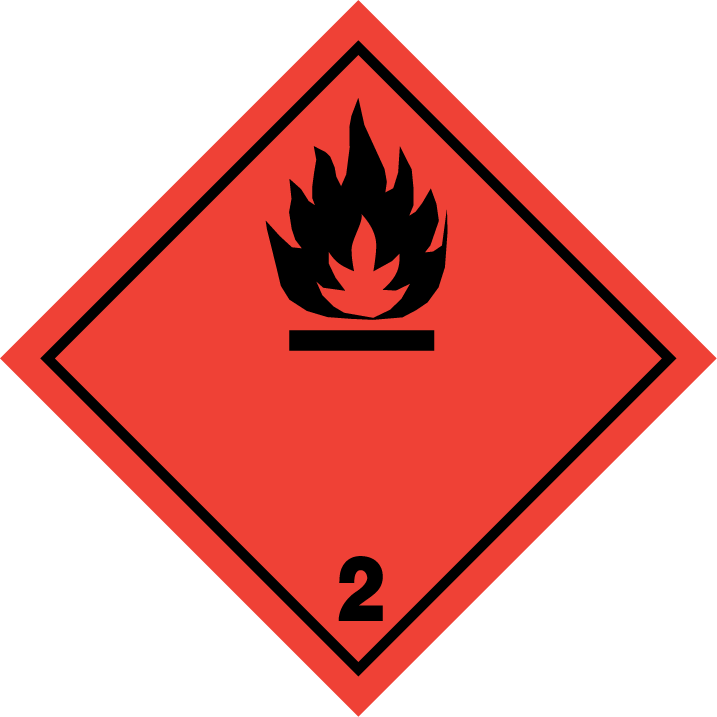
The UN model defines a gas as a substance which either has a vapour pressure greater than 300kPa at 50°C, or is completely gaseous at 20°C at standard atmospheric pressure. This category also includes compressed, liquefied, dissolved, and adsorbed gas articles. Items in this class are sorted into three divisions: 2.1: flammable gases, 2.2: non-flammable and non-toxic gases, and 2.3: toxic gases, labelled with the respective pictogram of a flame, gas cylinder, or skull and crossbones.
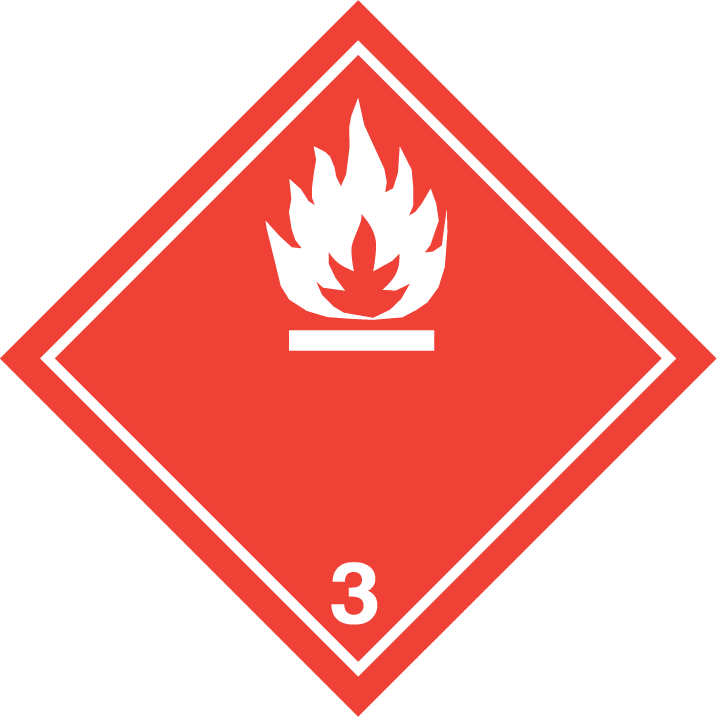
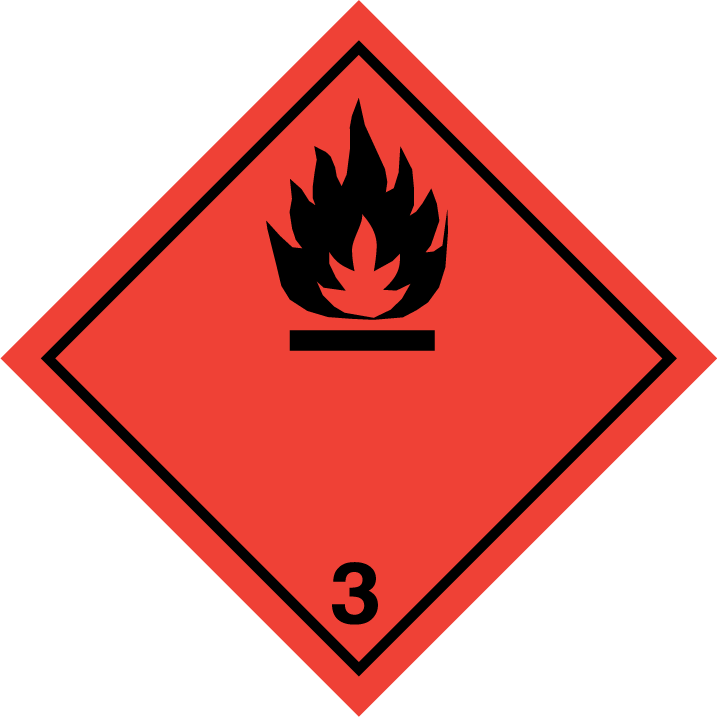
This class encompasses all flammable liquids—including liquids, mixtures of liquids, or liquids containing suspended solids. This category has been defined as substances which give off flammable vapour at temperatures of not more than 60°C, closed-cup test, or not more than 65.6 °C, open-cup test, as well as liquids transported at temperatures above their flash point. The class also includes liquid desensitised explosives.
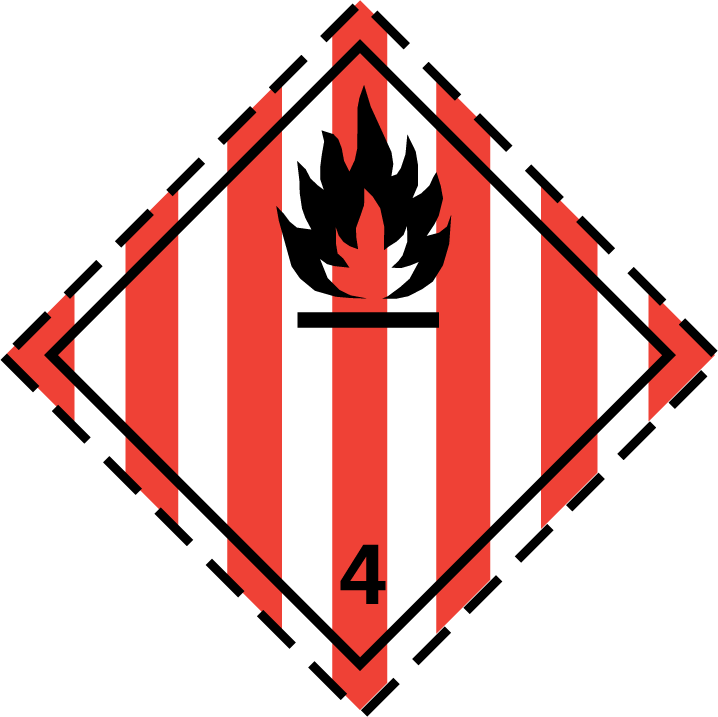
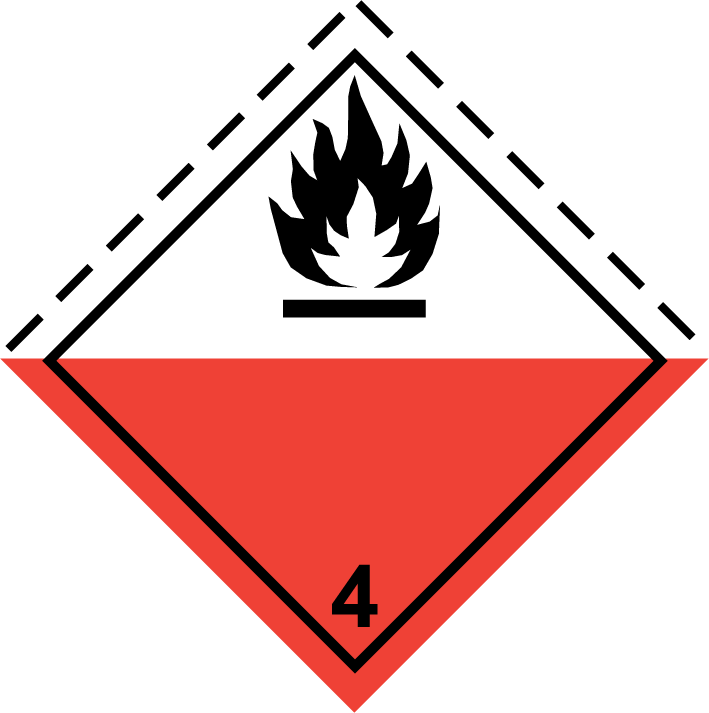
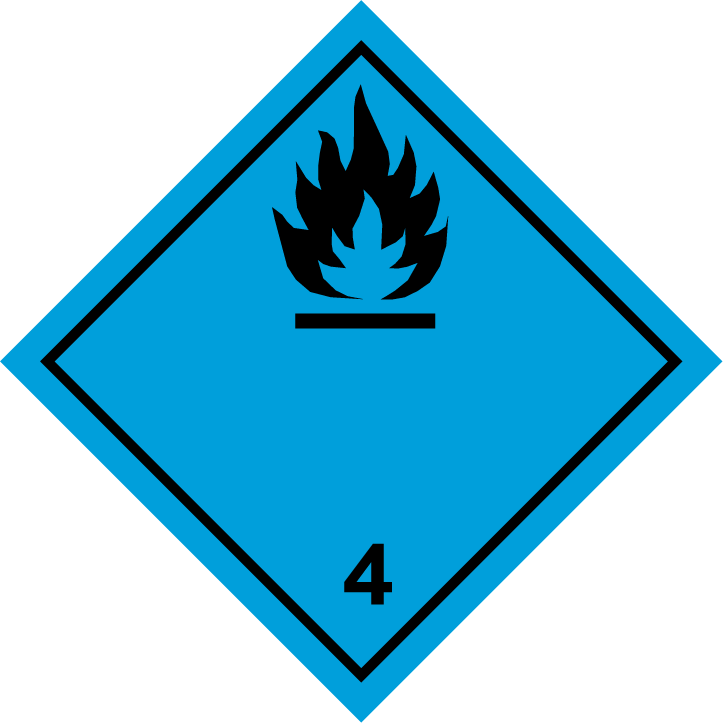
This class includes items which may cause fire through friction or readily combust under common transport conditions, with a heat of reaction of more than 300 J/g.
Division 4.1, indicated by the red and white striped label, covers flammable solids, self-reactive substances (not including Class 1 explosives or Class 5 oxidising substances), polymerizing substances, and solid desensitised explosives.
Division 4.2, indicated by the red and white bisected label, specifies substances which will ignite within five minutes upon contact with air, as well as self-heating substances (which may lead to ignition over hours or days).
Division 4.3, indicated by the blue label, covers substances which evolve into flammable gases after coming into contact with water. The gas in combination with air can form an explosive mixture.
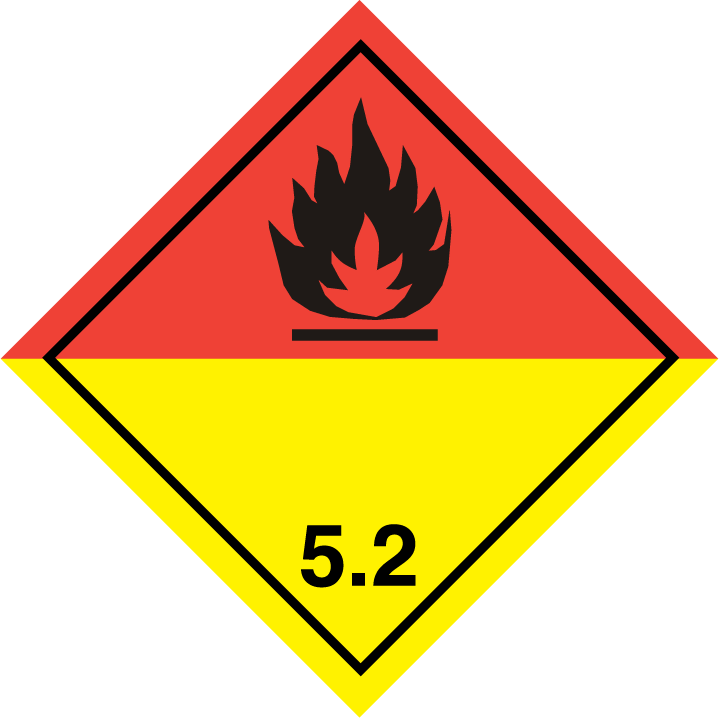
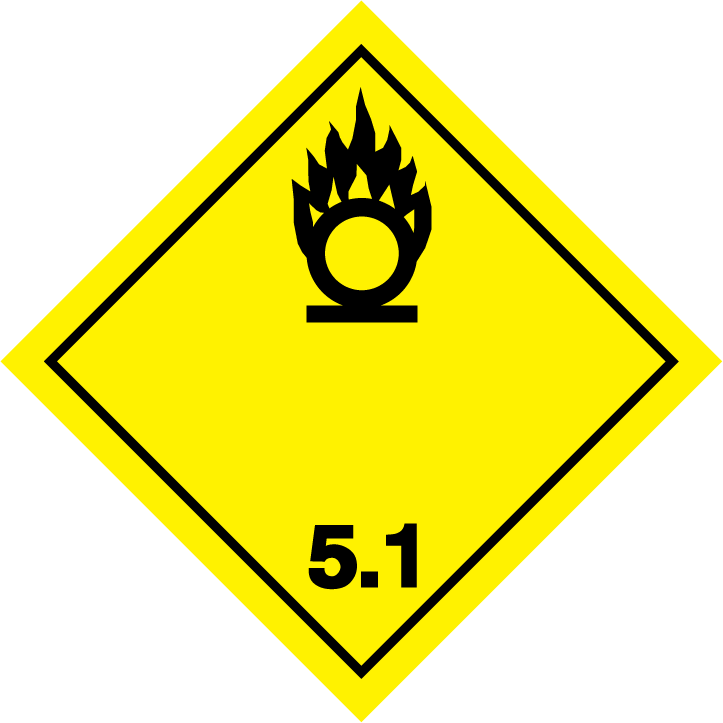
Division 5.1 categorises oxidising substances. In other words, substances which generally cause or contribute to the combustion of other materials by liberating oxygen. This is indicated on the label by a flame over a circle.
Division 5.2, indicated by a red and yellow bisected label with a flame, categorises organic peroxides. These substances are defined as having a bivalent -O-O- structure, with the ability to form organic radicals. These are thermally unstable substances which are liable to burn, explode, or react dangerously with other substances.
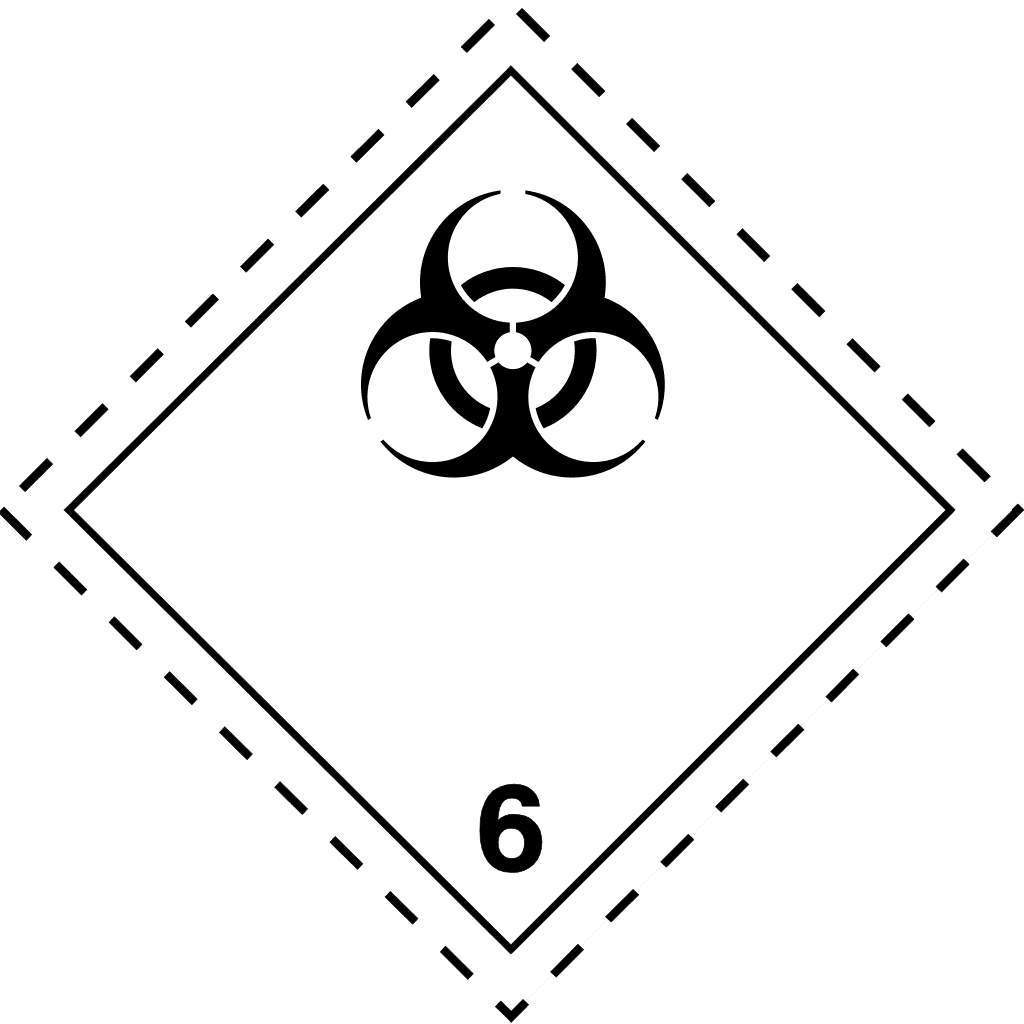
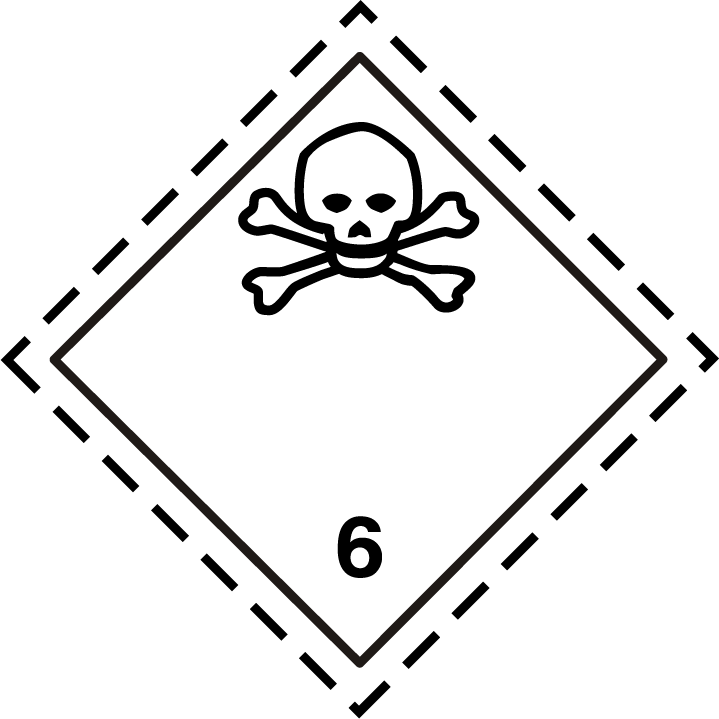
Division 6.1 covers toxic substances, indicated with a skull and crossbones on the label, which are liable to cause death, serious injury, or harm to human health. This may be through skin contact, inhalation, or ingestion.
Division 6.2 covers infectious substances, which are known or expected to contain disease-causing pathogens, and is indicated by a label with three crescents on top of a circle.
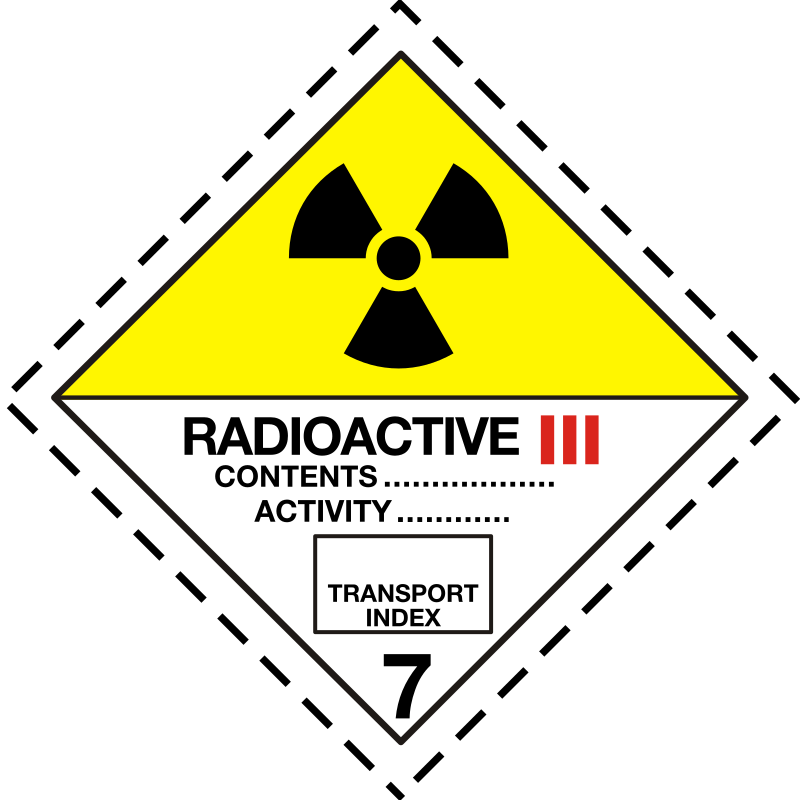
Radioactive substances are defined as any material containing or contaminated by radionuclides, with activity above a given threshold. This threshold varies depending on the radioactive species.
Substances are labelled in one of three ways depending on the class category (assigned by maximum dose rate). Category I uses a white label with a black trefoil symbol and one red vertical bar. Category II and category III both use a bisected yellow and white label, with two and three red bars respectively.
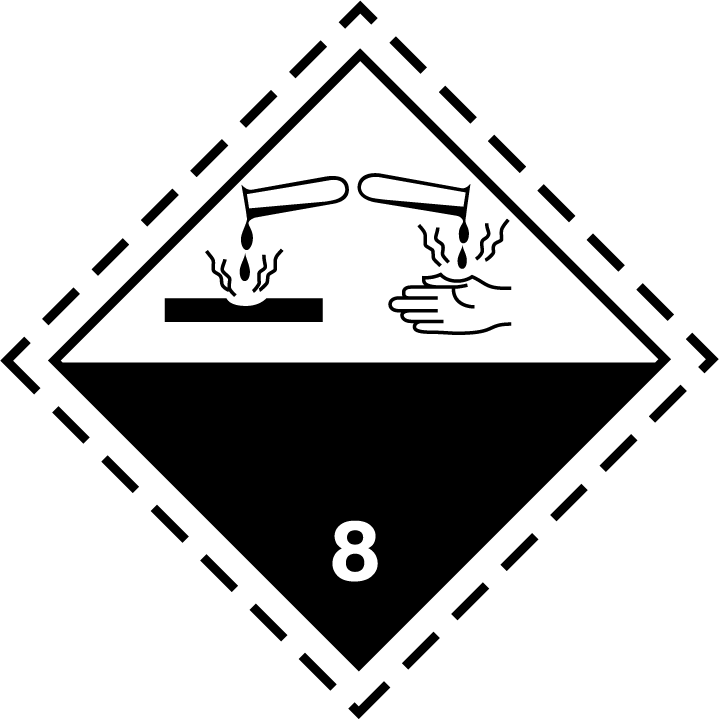
This class of dangerous goods covers substances which will irreversibly damage skin, other goods, or the means of transport upon contact. Materials of this nature are visualised on a black and white bisected label, with a hand and a metal surface being corroded from a liquid substance.

Substances and articles in this class include, but are not limited to: asbestos, lithium batteries, capacitors, life-saving appliances, ammonium nitrate-based fertilisers, genetically modified organisms and microorganisms, substances transported at elevated temperatures (liquids above 100°C or solids above 240°C), and environmentally hazardous substances.
It is also a blanket category for substances or articles which present a danger during transport, but not meeting the definitions of another class. Class 9: miscellaneous dangerous goods are indicated by a white label with 7 vertical black stripes in the upper half.
If you want to know more about chemical safety, storage, or regulations, we are here to help. At Chemwatch we have a range of experts spanning all chemical management fields, from heat mapping to Risk Assessment to chemical storage, eLearning and more. Contact us today to find out more.
Sources: